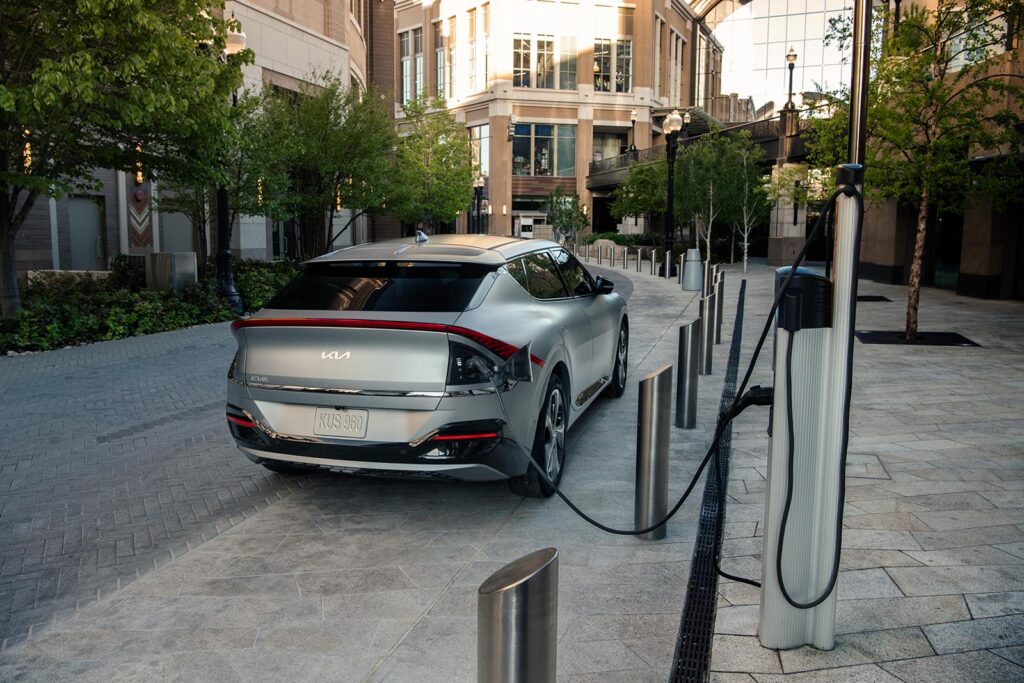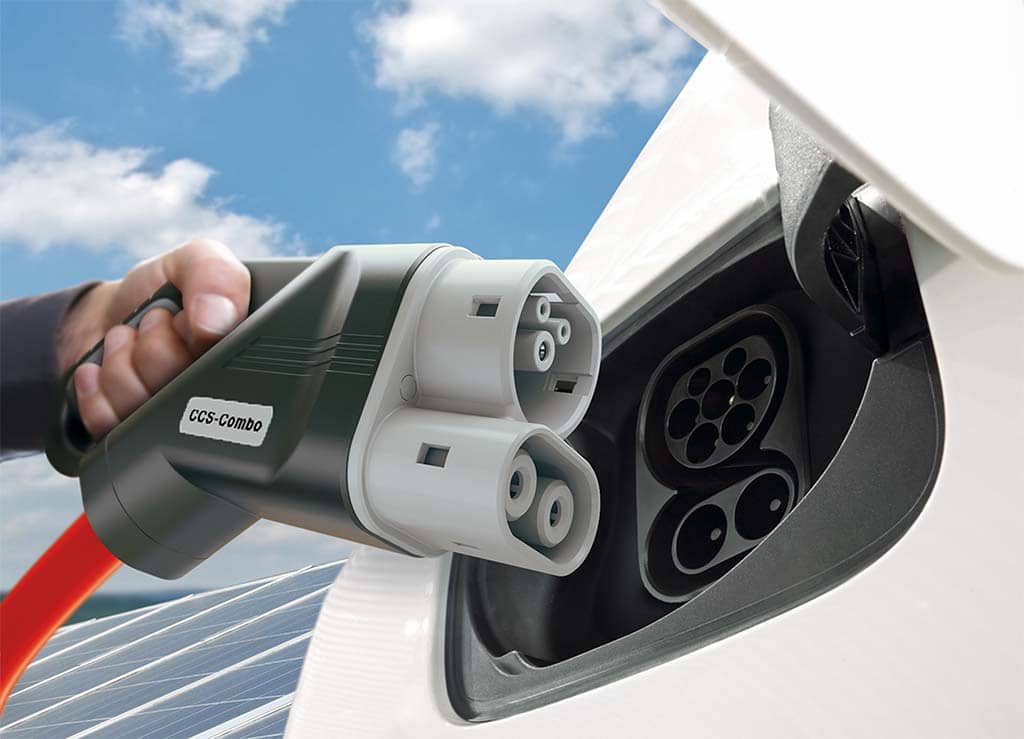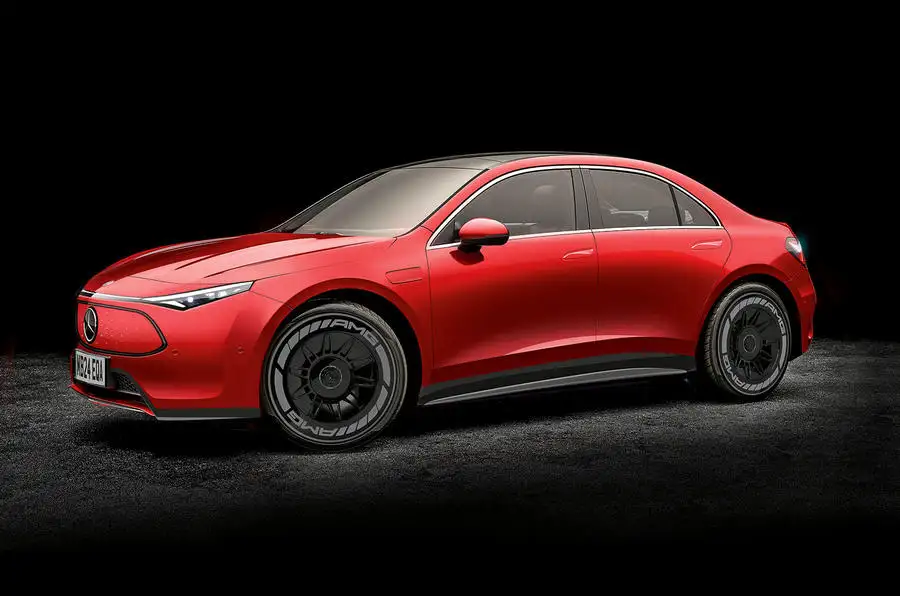AUTONEWS

An unstable infrastructure threatens to short-circuit the “EV Revolution”
With plans to have at least 30 battery electric vehicles in production by the middle of the decade, automakers know potential customers will need to make sure they can find places to plug in – especially if they live in an apartment or house where they can't. install a private loader.
Earlier this month, General Motors announced plans to install 40,000 public chargers across the US, many in rural communities where such devices remain few and far between. And GM is not alone. Ford, Volkswagen, Tesla and several other automakers have been working to expand the public charging network – which currently only totals around 57,000 plugs – as have charging company startups like EVgo, Electrify America and ChargePoint.
EV sales have risen from 1% of the U.S. new vehicle market at the end of 2019 to nearly 7% in recent months. And that could reach 20% by mid-decade, according to the Car Wars study released by Bank of America Research in the summer. But while setting up a network of readily accessible chargers is critical to supporting the “EV Revolution”, one needs to look further afield and ask an even more critical but basic question: Is the country’s electrical infrastructure ready to handle the millions of batteries? should electric vehicles circulate on our roads in the coming years?
Range Anxiety...Range anxiety has traditionally been one of the biggest concerns of potential EV buyers. But with newer models delivering 250, 350, even 500 miles per charge, finding a place to plug in is becoming a more pressing issue, according to John McElroy, a veteran analyst and host of video streaming show Autoline Detroit.
On the plus side, the bipartisan infrastructure bill passed by Congress in 2021 has earmarked $5 billion to fund the nationwide rollout, with the Biden administration pushing to have 500,000 public chargers installed by 2030.
“Increasing the network of charging stations is critical for electric vehicles to achieve widespread adoption,” said Kelsey Peterson, manager of transportation electrification at Michigan-based utility DTE.
The good news is that the number of shippers is growing rapidly. There were just 42,000 of them in place as of mid-2021, according to federal data. But the downside is that many of the ones that are in place are not working.
Broken plugs...“I had a lot of problems with EV chargers while I was on the road,” said Mercedes Lillienthal, a rally driver and EV fan who found herself perilously close to running out of electrons while looking for a charger that was in service at several occasions.
A recent study by EV advocacy group Plug In America found that about half of its respondents had problems using public chargers – with broken ones being the most frequent complaint. A controversial study published in early 2022 by the University of California Berkley estimated that only 72.5% of the 657 public fast chargers in the San Francisco Bay Area were operational at any given time.

While charging station operators often underestimate the extent of the problem, they don't deny that reliability is an issue. And if “EV owners continue to experience chargers that don't work as well as expected, it will slow down the EV revolution,” McElroy said.
Gradual growth...But broken chargers are far from the only concern. The more serious question is whether the US has enough generation capacity and, if so, whether it can get that power where EV owners need it, whether at home, work or at public charging stations.
The general consensus is that the US has enough power generating capacity to cover EVs that will likely be added to the country's vehicle fleet through at least 2025 and possibly 2030. But the further we go – and the greater the share of the vehicle market will be. new EVs become, the greater the challenge. Local utilities are “rising to the challenge,” says Trevor Pawl, Michigan's director of mobility. And that was echoed by a Consumers Energy executive who spoke in the background.
“The important thing is to expect EV growth to be gradual. It will happen over time, which, as long as you're planning, allows you to be ready," said Gary Silberg, Partner and Global Head of Automotive at KPMG. That said, the country's electric infrastructure is being stretched to the limit "even before you launch electric vehicles," Silberg added, and "it's going to take a lot of work."
The amount of work varies "region to region, state to state and utility to utility," said Dave Reuter, director of marketing and communications for NextEra Energy, based in Jacksonville, Florida. Without pointing a finger, Reuter worries that some providers are simply not adapting to what's needed going forward.
Fire and ice... This has been highlighted by several recent episodes that have left millions of Americans in the dark – or worse. In California, during last summer's heat waves, customers faced the prospect of continued blackouts as demand levels strained power supplies. In several years prior, strong winds have led to downed power lines that have triggered raging wildfires — one blamed for a massive fire in 2019 in Sonoma County that caused the evacuation of 100,000 people and destroyed hundreds of homes.
An early 2021 ice storm in Texas destroyed the state's power grid, leaving millions in the dark for days. Michigan suffered so many storm-related grid outages that year that Attorney General Dana Nessel began relying on DTE to fix its problems, particularly by increasing maintenance on its distribution lines.
The commonly used term “infrastructure” is broad and somewhat misleading. In reality, the electrical grid consists of several distinct elements, starting with power generation, as well as the transmission from the generators to local communities, and then the distribution grid that supplies power to individual homes and businesses.
Powering on...Clearly, there is a need for significant new investment in power generation, and these facilities need to be properly equipped and maintained, experts emphasize. But there has been a rapid growth of natural gas generators replacing dirty coal facilities.
And the big wave is coming in the renewable sector, with wind, solar and other clean alternatives adding gigawatts of capacity. Ford Motor Co. plans to have all of its Michigan operations run on renewable energy within a few years, as well as the new BlueOval City EV manufacturing complex it's setting up near Memphis.
But, as the troubles in California, Texas and Michigan underscored, it is the transmission and network portions of the network that appear to be in the worst shape.
An outdated distribution system...“The (transmission and distribution network) is very old, with a quarter of it over 50 years old,” said Christine Oumansour, partner at energy consultancy Oliver Wyman. On the plus side, Wyman's research suggests that US utilities, along with independent providers who manage transmission and distribution, are investing an estimated $100 billion annually to achieve what will be needed for the EV era.
While spending on everything from new solar and wind farms to maintaining neighborhood rights of way is critical, experts say utilities must implement a high-tech power grid if they are to achieve maximum efficiency in the future. The grid of the future is expected to be significantly different from what we have today.
On the one hand, there will be the challenge of leveling the energy load from renewable sources. The winds don't always blow and solar panels are useless at night. That's why NextEra Energy installed a 945 megawatt battery storage system in Manatee County, Florida several years ago. The largest system of its kind in the world, it can handle enough power to cover peak load demands for up to four hours.
A Smarter Grid...At a more local level, we're likely to see smaller storage systems, perhaps even a few hundred kilowatts, providing backup for individual neighborhoods. GM, for example, has been experimenting with so-called “second life” batteries. Pulled when vehicles like the Chevrolet Bolt are scrapped, many automotive batteries are expected to retain up to 70% of their capacity. Stack a few in a shed-sized backup unit and you could keep a neighborhood running while repair crews work on the downed lines.
At the same time, the network will have to become much "smarter", according to analyst Oumansour and other experts. He will need to learn to detect failures, even predict them before a failure occurs. He will be able to redirect energy when and where it is most needed. And that will cover everything from large powerlines to individual distribution points.
At the local level, as more and more vehicles go electric, "we're going to have to be able to monitor" and adjust the way chargers in a parking structure operate, said RJ Juliano, executive vice president of Parkway Corp., the Philadelphia-based company that is the nation's largest operator of parking lots and structures. In large cities, where single-family homes are less common, EV owners will have to rely on public charging – either fast chargers or slower Tier 2 systems at facilities like the ones Parkway manages.
But there will be limits to the amount of energy that can be delivered in many older neighborhoods, Juliano said. To compensate, companies like Parkway will need load management systems and chargers that can talk to each other to see how they're being used. They can collectively—or individually—decelerate if they exceed the available power source.
Vehicle to Charge...These chargers could end up helping to keep the grid running smoothly by taking advantage of the “vehicle to charge” technology that many new EVs, like the Ford F-150 Lightning, are capable of. The truck's battery can power a home if there's a blackout, notes Ford. And, for years to come, it can also send power back to the grid when there's peak demand, essentially using its battery as grid backup.
And vehicle owners could get paid for providing that power. Owners can already set a limit on how much power can be drawn from their Lightning batteries, so they don't end up with a dead package. When demand drops, however, the vehicle automatically starts charging again.
Software to manage technology from the vehicle to the grid is still in the development stage, but is expected to become a key asset in helping the power grid of the future meet increasing demand as millions of new vehicles become available. electrical.
Supercharging the system...What is clear is that the advent of the EV era will supercharge and transform the nation's electrical power infrastructure. In the short term, most experts believe that the existing network can handle what is expected to be connected to it. In the long term, however, significant updates will be required.
There will be a need for new generation capacity, especially from renewable sources. And transmission and distribution networks will need to become smarter and more robust. If government and industry start working together now, proponents say, the transition should be smooth. Otherwise, the EV Revolution may be disconnected.
Paul A. Eisenstein, Detroit-USA

Nenhum comentário:
Postar um comentário